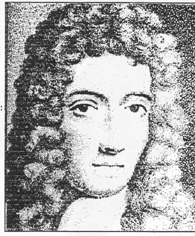
GAS LAWS
|
|
I. Variables used to Measure Gas samples
A. _________________: amount of ______________ it takes up
units: _________ or ________
B. ______________: how much is there?
1.
_____________ in grams (m)
*
2. __________________ (new symbol, ______)
3. ________________ or _______________
C. _____________________
Three temperature scales:
__________________, K
__________________, oC
__________________, oF
K = oC + 273
oF = 1.8 oC + 32
oC = (oF - 32) / 1.8
D. ____________________: amount of _____________ per unit ______________
units:
___________ = pounds / square inch
___________ = atmospheres
___________ = millimeters of mercury
___________ = inches of
mercury
___________ = centimeters of
water
___________ = torricelli
___________ = kiloPascals
conversions:
14.7 lbs/in2 = 1 atm = 760 mm Hg = 760 torr = 101.3 kPa
Examples:
Convert:
1. 250 mL to L
2. 6.2 L to mL
3. 42 g N2 to molecules N2
4. 3 mol oxygen to grams
5. 70 oF to oC
6. 15 oC to oF
7. 25 oC to K
8. 300 K to oC
E. Standard Conditions
___________ = ______________________________________ = __________ and _________
II. Kinetic Molecular Theory of Gases (or if you could see the gas particles in the air, what would they be doing?)
A. Gases consist of tiny particles with practically no volume. They are tiny, tiny pinpoints, taking up essentially no space.
Evidence:
1. ___________________________________________________________
2. ___________________________________________________________
3. ____________________________________________________________
B. The gas particles zip around in rapid straight line motion. They never curve. Remember, particles in a solid vibrate and particles in a liquid roll and slide over each other.
Evidence:
1. _____________________________________________________________
2. _____________________________________________________________
3. _____________________________________________________________
C. The particles lose no energy due to collisions. They don’t “tire” out”, like a bouncing ball; they keep moving.
Evidence:
__________________________________________________________________
__________________________________________________________________
D. The average kinetic energy is directly related to temperature.
The higher the temperature, the more energy the particles have. There is, however, a distribution of energy within a sample.
Evidence:
E. There are no attractive or repulsive forces between gas particle. As they pass each other, they don’t attract or repel each other. At low temperatures and/or high pressures, this is not true; they will attract.
Evidence:
1. ___________________________________________________
2. ___________________________________________________
REVIEW: Explanation of Phenomena involving GAS
1. Why do gases exert pressure?
Gas particles are constantly colliding with the inside
of its container.
This causes a _________________ on the
______________ of the surface.
Pressure is force per unit area or P =
_________________
(tire or balloon)
2. Evaporation
EVAPORATION is LIQUID --------------> GAS (at any temperature)
Particle X gets hit and is popped out of
the liquid. ONLY HIGH ENERGY LIQUID
PARTICLES CAN DO THIS AND THEY
MUST BE AT THE SURFACE.
(liquid particles sliding and vibrating)
Why does perspiring cool us off?
Which evaporates faster, a rain puddle on a cold day or one on a hot day?
3. Boiling
________________ is a special case of LIQUID --> GAS
4. Sublimation
SUBLIMATION IS SOLID ------------> GAS (without melting)
Particles X gets vibrated
against, becomes a high
energy solid particle and is
ejected from the solid
(vibrating solid particles)
5. Condensation (or Deposition)
GAS ---------------------> LIQUID (OR SOLID)
-------->
--------->
gas particles gas particles attracting solid or liquid
Ideal Gases vs. Real Gases
III. Equation of State for an Ideal Gas: Ideal Gas Law
 |
 |
 |
H2
O2
P = 2 atm
P = 4 atm
V = 0.5 L
V = 2 L
T = 300 K
T = 150 K
n = 0.04065 mol
n = 0.650 mol
A little trial and error produces:
To use this equation, P must be in ___________ V in ___________, n is ________, T is
_______
The ideal gas law is :
R = ____________________
=
Examples:
1) What volume will 8 moles of hydrogen gas occupy at 2 atm and 81 oC?
2) A sample of gas is collected in a 3 L flask at 780 torr and 22 oC. How many moles of gas are present?
3) What must be the temperature (in oC) for 2 moles of gas in an 11.2 L flask to exert a pressure of 1 atm?
4) What volume will 10 moles of gas occupy at STP?
Variations of the Ideal Gas Law:
moles =
or
n =
so:
P V =
1) What is the mass of 1 L of hydrogen at STP?
2) Find the molecular weight of a gas if 0.20 g of it occupies 100 mL at 0.5 atm and 0
oC?
3) What is the temperature (in K and oC) if 21.3 g Cl2 occupies 60 L at 4 atm?
4) Find the molecular weight of a gas that occupies 1 L at 27 oC and 720 torr?
IV. Combined Gas Law
What happens to a gas when the conditions change:
V. Boyle’s Law
 |
VI. Charles’ Law

VII. Gay-Lussac’s Law
 |
VIII. Dalton’s Law of Partial Pressure
| HOMEPAGE |